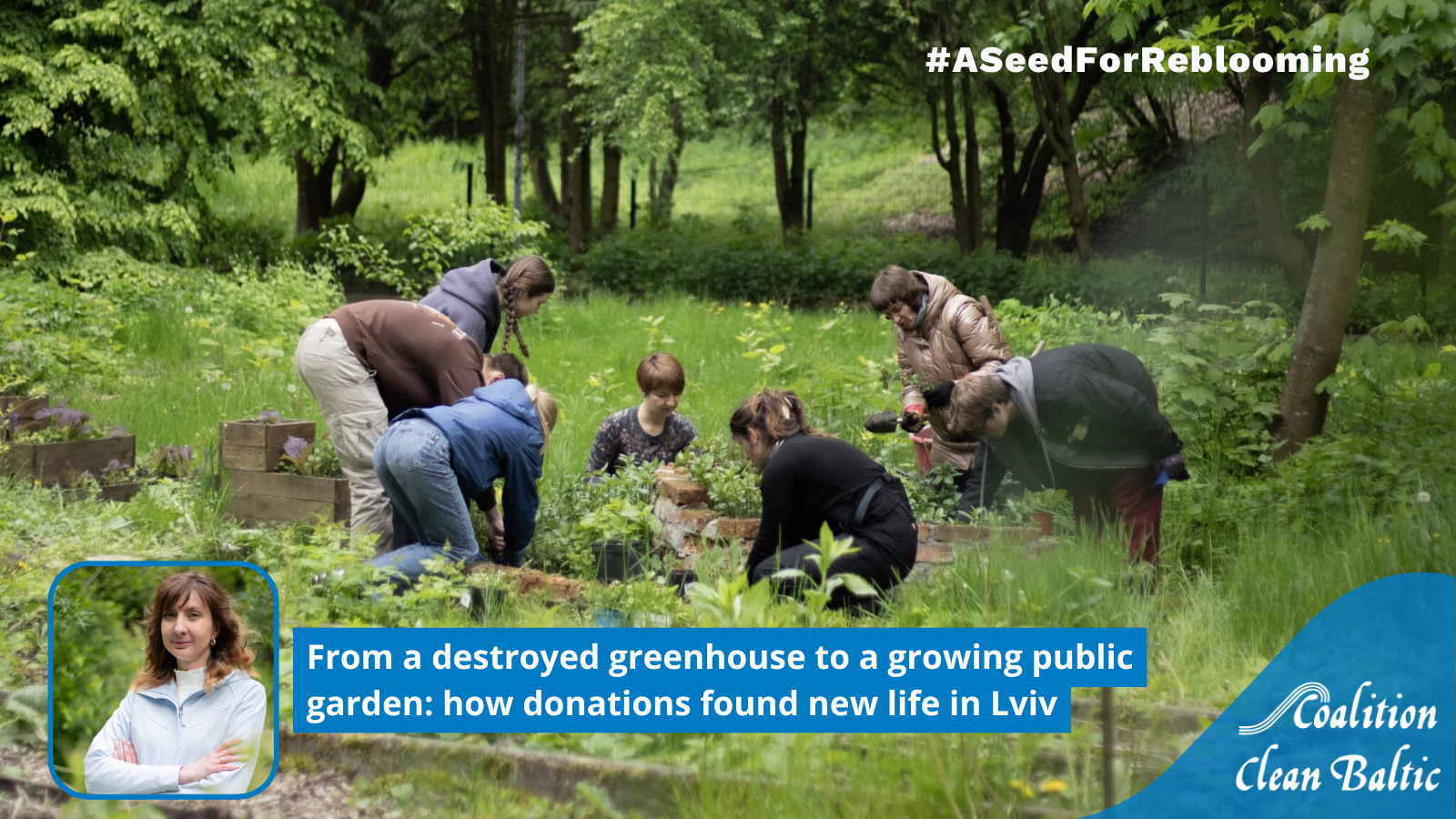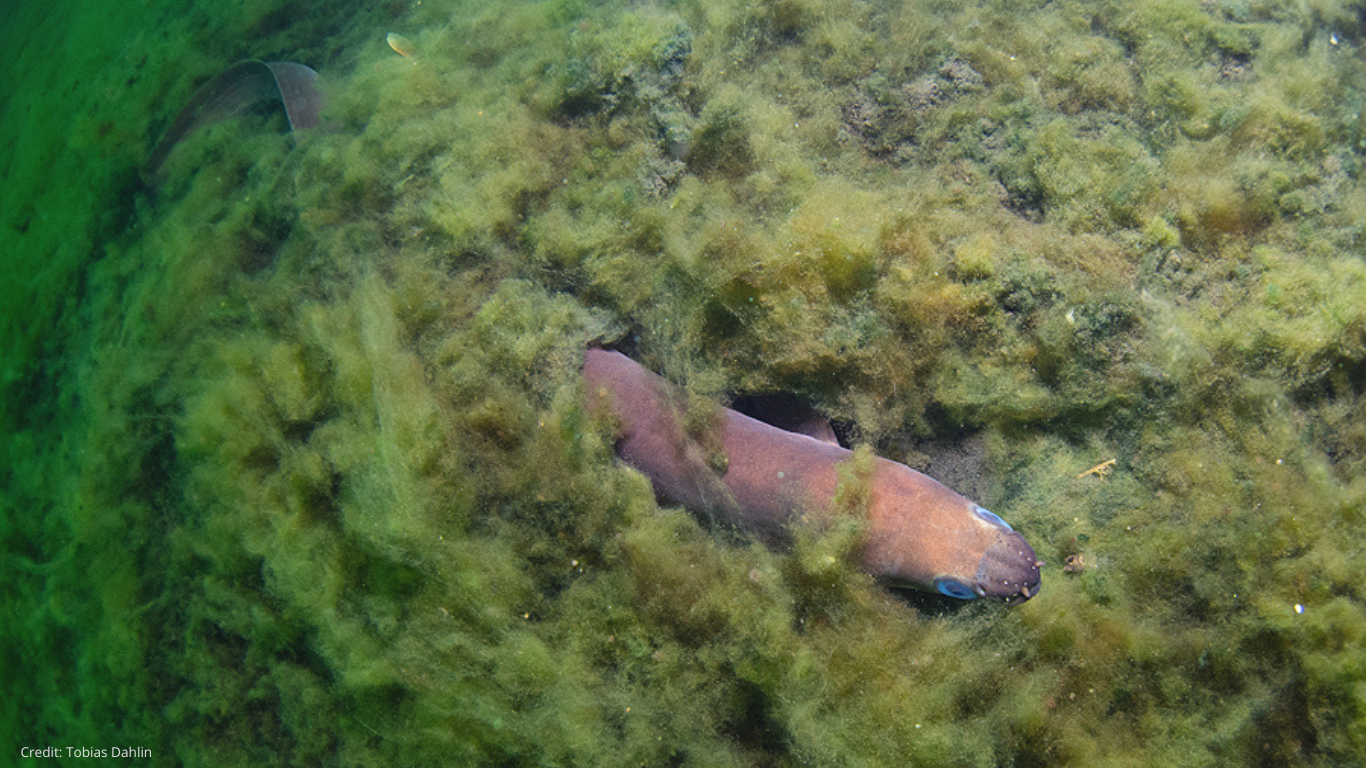NGOs New Year’s “resolution list” to ensure Ministers deliver a future-proof plan to save the Baltic Sea
December 2020 – Another year has come and gone, and we, the Coalition Clean Baltic and WWF Baltic Ecoregion Programme are taking stock of the Baltic Sea Action Plan (BSAP) presently being revised by all Baltic Sea coastal countries.

We have a special resolution for HELCOM Heads of Delegation after a year of the revision process: to deliver an actionable Baltic Sea Action Plan (BSAP) that is future-proof. The revised plan must go beyond “business as usual” to address the challenges of the coming decade, including seven priority areas for action that are not yet included in the revised BSAP.
The current plan ends in 2021 and has not met its aim to prevent further deterioration of the environment by the agreed timeline [1]. A new 10-year BSAP is being revised [2] for adoption at next year’s HELCOM Ministerial Meeting in October. Today, a first draft of the new BSAP is being presented at the 59th Meeting of the Heads of Delegation. In our opinion, there are priority areas that still need addressing to fulfil the pre-existing goals and additional pressures we foresee will continue to halt the sea from reaching good environmental status in the coming decade.
To help with this task NGOs across the Baltic Sea region have collectively produced a Shadow plan [3] setting recommended actions across all segments of the BSAP. There are seven of these priority action areas we want to underscore be included to ensure a future-proof action plan:
- Actions reducing underwater noise: A recently published paper on the matter clearly states that we know enough to act [4]. It is crucial that underwater noise is measurably and continuously reduced as soon as possible, and several possible actions are readily available.
- Actions to protect our endangered species: Eel –Recent scientific advice from the International Council for the Exploration of the Seas (ICES) shows no improvements in eel stocks [5]. The proposal to close recreational fishing is supported by the anglers themselves [6]. Measures such as banning recreational fishing must be included in the update. Harbour porpoise – ICES has published scientific advice on how to minimize bycatch of the Baltic harbour porpoise. This is discussed within Baltfish [7], but not all HELCOM Contracting Partners are EU Members, so it also needs to be discussed within HELCOM . We strongly urge support of this measure.
- Actions reducing input of hazardous substances: Both source-reduction measures such as restrictions on over-the-counter pharmaceuticals [8] and end-of-pipe technologies like the promotion of constructed wetlands in wastewater treatment are not supported, despite proof of their effects to reduce inputs of hazardous substances.
- Actions addressing nutrient inputs from agriculture: Economic instruments to discourage overuse of mineral fertilizers (Nitrogen and Phosphorus) and limit livestock densities in agriculture have not been endorsed [9], [10], [11]. Instead mostly voluntary measures were supported, which we can see from the current Common Agriculture Policy, does not incentivize the appropriate reduction of fertilizer in the Baltic sea region [12].
- Actions addressing lost fishing gear: This is the deadliest form of marine litter. Prevention measures should be prioritized in order to reduce the scale of the problem. It is crucial that the updated BSAP recognizes the importance of fishing gear marking and gear loss reporting proper implementation on national and regional level [13].
- Actions addressing climate change: A healthy and thriving Baltic Sea will not be possible without a plan to include climate mitigation and adaptation measures that build long-term resilience to climate change in our marine and coastal ecosystems. We strongly urge including binding climate targets and developing a roadmap to achieve climate neutrality in the Baltic Sea Area by 2040 [3].
- Actions addressing Marine Protected Areas (MPAs): MPAs are endorsed by the BSAP to cover 30% of the sea by 2030, but it does not go far enough to regulate human activities in those areas. A 10% target for strictly prohibited areas will ensure we meet the 2030 EU Biodiversity strategy goals.
"The NGO community send this resolution list to all Baltic countries to take the lead in propelling the updated BSAP to be ambitious and action oriented. HELCOM has the platform, it’s now time for decisive action to empower change and save our beloved Baltic Sea”
says the Coalition Clean Baltic and the WWF Baltic Ecoregion Programme.
We look to the national HELCOM representatives meeting today in the Head of Delegation to assure the revised BSAP contains measures for all relevant pressures on the Baltic Sea – measures which have set timelines for prompt implementation and which will show a measurable reduction of the pressures.
–END—
Notes to editors:
CCB – Coalition Clean Baltic is a politically independent, non-profit association, which unites 23 member organizations and 1 observers, with over 850,000 members in all countries around the Baltic Sea. The main goal of CCB is to promote the protection and improvement of the Baltic Sea environment and its natural resources. More info at www.ccb.se.
WWF Baltic Ecoregion Programme – is an ambitious and highly influential force working to conserve and restore the health of the Balitc Sea. The programme is comprised of WWF and NGO partners in each of the nine coastal Baltic Sea countries. Representing the region’s largest membership network, the programme’s approach has been to work with public and private sector partners toward ensuring a healthy, productive Baltic Sea through sustainable, ecosystem-based management. More info at: https://www.wwfbaltic.org/
[1] The HELCOM State of the Baltic Sea Report – shows that despite a few promising trends in the last 12 years, the objectives of the current BSAP have not been reached and countries have missed the 2020 deadline – outlined in the European Union’s Marine Strategy Framework Directive – to achieve and maintain a ‘Good Environmental Status’ in the sea.
[2]
The update process – An updated plan is currently being developed and negotiated by the ten HELCOM members – the nine Baltic Sea countries plus the European Union – and is due to be adopted at a Ministerial Meeting 2021. Its focus will be on the same areas as the current plan with some adaptation to include additional pressures from human activities including: climate change, eutrophication, hazardous substances and litter, sea-based activities and achieve a healthy and resilient ecosystem. It will also address emerging issues to be tackled on a regional scale such as, marine litter, underwater noise and seabed disturbance.
[3]
The Baltic Shadow Plan: For the future of the Baltic Sea
[4]
CCB paper on underwater noise
[5]
ICES 2020 – Advice on fishing opportunities, catch and effort. Ecoregions in the Northeast Atlantic: http://ices.dk/sites/pub/Publication Reports/Advice/2020/2020/ele.2737.nea.pdf
[6]
EEA position on the rebuilding of the European Eel (Anguilla anguilla) stock: https://www.eaa-europe.org/positions/eel-2018.html
[7]
Joint NGO letter to EU Commission on Baltic proper harbour porpoise
[8]
HELCOM Baltic Marine Environment Protection Commission: proposal for the update of the BSAP – ‘Implement restrictions on over-the-counter pharmaceuticals’: https://portal.helcom.fi/workspaces/BSAP%20UP%20NEW%20ACTIONS-183/Shared%20Documents/Synopses%20-%20proposals%20received/Implement%20restrictions%20on%20over-the-counter%20pharmaceuticals.pdf
[9]
HELCOM Baltic Marine Environment Protection Commission: proposal for the update of the BSAP – ‘Levy on nitrogen in mineral fertilizer’: https://portal.helcom.fi/workspaces/BSAP%20UP%20NEW%20ACTIONS-183/Shared%20Documents/Synopses%20-%20proposals%20received/Levy%20on%20nitrogen%20in%20mineral%20fertilizer.pdf
[10]
HELCOM Baltic Marine Environment Protection Commission: proposal for the update of the BSAP – ‘Levy on mineral phosphorus in animal fodder and on mineral fertilizer P’: https://portal.helcom.fi/workspaces/BSAP%20UP%20NEW%20ACTIONS-183/Shared%20Documents/Synopses%20-%20proposals%20received/Levy%20on%20mineral%20phosphorus.pdf
[11]
HELCOM Baltic Marine Environment Protection Commission: proposal for the update of the BSAP – ‘Reducing livestock densities and coupling livestock to the area of available farmland’: https://portal.helcom.fi/workspaces/BSAP%20UP%20NEW%20ACTIONS-183/Shared%20Documents/Synopses%20-%20proposals%20received/Reducing%20livestock%20densities%20and%20coupling%20livestock%20to%20the%20area%20of%20available%20farmland.pdf
[12]
Potentials for circularity in the agrifood system: https://wwwwwfbalticorg.cdn.triggerfish.cloud/uploads/2020/09/metabolic_report_wwfse_potential-for-circularity-in-the-agrifood-system_17032020_hr.pdf
[13]
HELCOM Baltic Marine Environment Protection Commission: proposal for the update of the BSAP – ‘Development of strategies for preventing fishing gear loss in the Baltic Sea by analyzing the fishing strategic context and available options for fishing gear marking’: https://portal.helcom.fi/workspaces/BSAP%20UP%20NEW%20ACTIONS-183/Shared%20Documents/Synopses%20-%20proposals%20received/Strategies%20for%20preventing%20fishing%20gear%20loss.pdf

